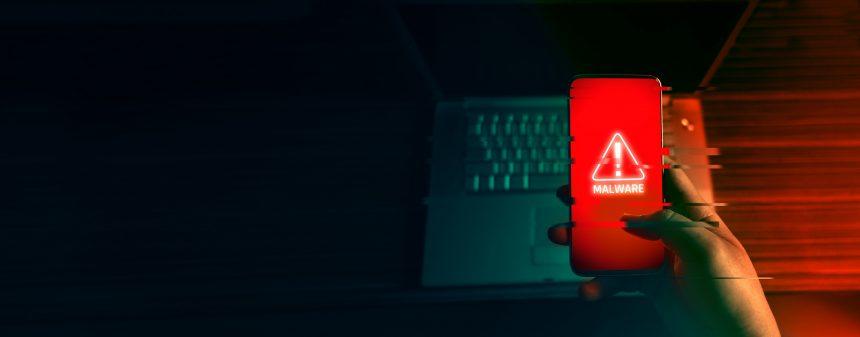As technology advances, cybercriminals continuously develop sophisticated tactics to exploit unsuspecting individuals and organizations. One of the latest threats to emerge is Fake Call Vishing Malware, a malicious type of software that leverages voice phishing techniques to trick victims into providing sensitive information. This article will delve into the actions and consequences of Fake Call Vishing Malware, identify some detection names, explore similar threats, and provide a comprehensive guide for removal and prevention.
Download SpyHunter Now & Scan Your Computer For Free!
Remove this and many more malicious threats to your system by scanning your computer with Spyhunter now! It’s FREE!
What is Fake Call Vishing Malware?
Fake Call Vishing Malware is a type of malware that engages in voice phishing, commonly known as "vishing." It uses social engineering tactics to manipulate individuals into disclosing personal information, such as passwords, credit card numbers, and other sensitive data. The malware often masquerades as legitimate calls from trusted organizations, creating a false sense of security for victims.
Actions and Consequences of Fake Call Vishing Malware
Once installed on a victim's device, Fake Call Vishing Malware can execute various actions that pose significant risks to personal and financial security:
- Simulated Calls: The malware can generate fake calls from seemingly reputable sources, such as banks or tech support, tricking users into believing they are interacting with legitimate entities.
- Data Harvesting: As victims engage with the malware, they may unknowingly provide sensitive information that can be used for identity theft, financial fraud, or unauthorized access to accounts.
- Financial Loss: Victims of vishing attacks can suffer direct financial loss due to unauthorized transactions or the compromise of banking information.
- Emotional Distress: The stress and anxiety of falling victim to a scam can have lasting emotional impacts on individuals.
Detection Names for Fake Call Vishing Malware
Detecting Fake Call Vishing Malware can be challenging due to its deceptive nature. However, various security software programs identify it under different names, including:
- Vishing Malware
- Voice Phishing Malware
- Phishing Call Trojan
Similar Threats
Several other cyber threats share characteristics with Fake Call Vishing Malware, including:
- Phishing Emails: Fraudulent emails that trick users into revealing personal information.
- SMS Phishing (Smishing): Text messages that lure recipients into providing sensitive data via fake links.
- Ransomware: Malicious software that encrypts data and demands a ransom for decryption, sometimes using social engineering tactics similar to vishing.
Comprehensive Removal Guide for Fake Call Vishing Malware
If you suspect that your device is infected with Fake Call Vishing Malware, it’s crucial to take immediate action. Follow these steps to remove the malware:
Download SpyHunter Now & Scan Your Computer For Free!
Remove this and many more malicious threats to your system by scanning your computer with Spyhunter now! It's FREE!
Step 1: Disconnect from the Internet
To prevent further data loss or communication with the malware, disconnect your device from the internet immediately.
Step 2: Enter Safe Mode
Boot your device in Safe Mode. This will disable third-party applications, including the malware, allowing you to work without interference.
- For Windows: Restart your computer, and press the
F8key during boot-up. Select Safe Mode from the menu. - For Mac: Restart your Mac and hold down the
Shiftkey until the Apple logo appears.
Step 3: Use Anti-Malware Software
Download a reputable anti-malware tool, such as SpyHunter. Here’s how to proceed:
- Download SpyHunter from any of the download buttons on this page.
- Install and run SpyHunter, allowing it to scan your system for malware.
- Follow the prompts to quarantine and remove any identified threats.
Step 4: Manually Remove Malicious Applications
Check your installed applications for any suspicious software that may be linked to the vishing attack:
- For Windows: Go to Control Panel > Programs > Uninstall a program. Look for any unfamiliar applications and uninstall them.
- For Mac: Open Finder, go to Applications, and delete any suspicious apps.
Step 5: Clear Browser Data
To ensure that no traces of the malware remain in your web browser, clear your browsing data:
- For Chrome: Go to Settings > Privacy and Security > Clear browsing data.
- For Firefox: Go to Options > Privacy & Security > Clear Data.
Step 6: Change Passwords
After the malware is removed, change passwords for your online accounts, especially those related to financial information. Use strong, unique passwords for each account.
Step 7: Monitor Financial Accounts
Keep an eye on your financial accounts for any unauthorized transactions. Report any suspicious activity to your bank immediately.
Best Practices for Preventing Future Infections
To protect yourself from Fake Call Vishing Malware and similar threats in the future, follow these best practices:
- Be Skeptical of Unsolicited Calls: Always verify the identity of callers before providing any personal information.
- Use Call Screening: Enable call screening features on your phone to filter out potential spam calls.
- Educate Yourself and Others: Stay informed about the latest phishing tactics and educate friends and family about recognizing scams.
- Keep Software Updated: Regularly update your operating system and applications to protect against vulnerabilities.
- Use Reliable Security Software: Install reputable security software, like SpyHunter, and keep it updated to safeguard against emerging threats.
Conclusion
Fake Call Vishing Malware represents a growing threat in the realm of cybercrime, exploiting individuals through deception and manipulation. By understanding the actions and consequences of this malware, employing thorough removal strategies, and following best practices for prevention, you can significantly reduce your risk of falling victim to such attacks.
To enhance your security, consider downloading SpyHunter and conducting a free scan of your computer. With its advanced malware detection and removal capabilities, you can protect your device from Fake Call Vishing Malware and other threats, ensuring your digital safety.





